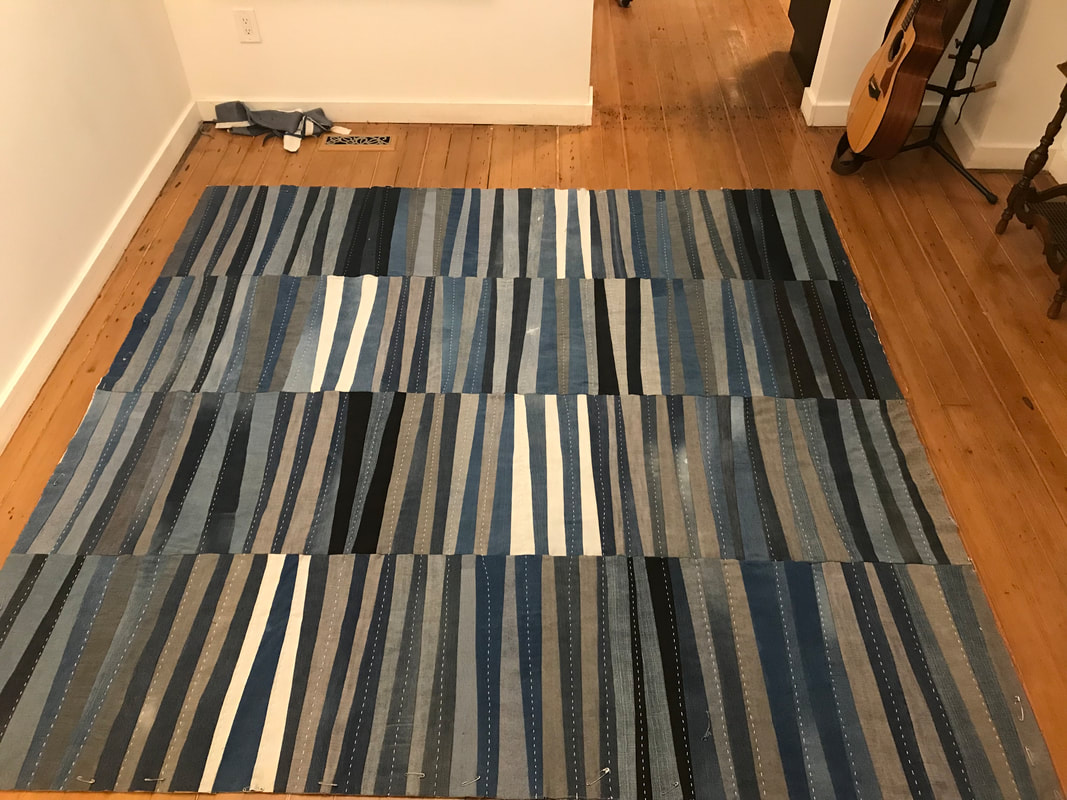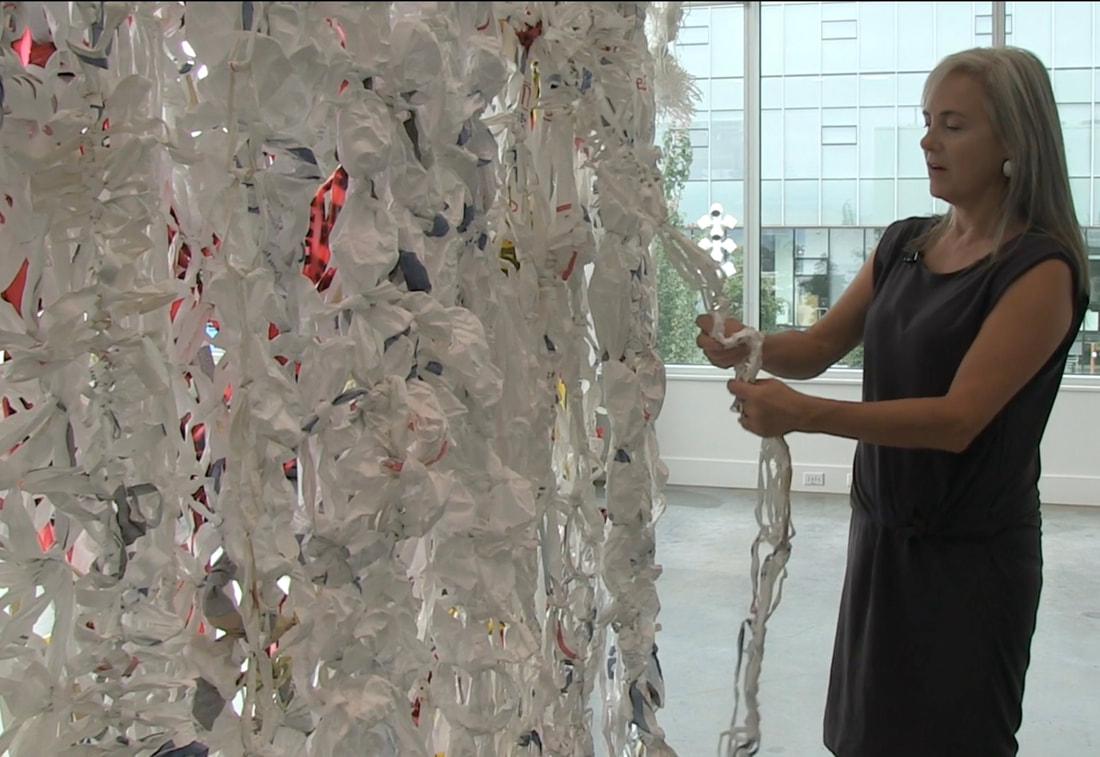
 Click HERE for a 10-minute journey through the methods and motivations behind this MFA thesis. (Film made by Ana Valine, Rodeo Queen Pictures, August 2020)
Where is the joy when you’re living in a time of a global coronavirus pandemic and a local toxic-drug epidemic? What is the use of making when your city is seized by global investment-real estate schemes, when there’s too much stuff in a overheated planet and a hateful, superpower president next door? These questions ricochet around my brain, only abating when this futile, exhausting expenditure of energy hones in on the rote activity of knotting and needleworking. The hand-wringing falls into rhythm as I grasp at lost, tossed threads that I make whole and into whole new ideas. Making is a very personal physical reaction to perilous times and unstable circumstances but working with found fibre is also an intrinsically social action that weaves in disparate economic circumstances, language, race, age and abilities. Braiding, stitching, knotting, needleworking create resilient connective tissue between one body and another. Strands thicken into solid links between the ancient and the modern, utility and self-expression, the digital and the physical, the personal and the political. By exploring the inherent qualities of abject manufactured material, the body binds with other bodies and other places, some known, some not. It is work, but outside the tumultuous dominant economic system. It is an experience of the history of production and distribution through the material at hand. Even in these times, when gathering around a table is a hazardous activity, when our pack species is feeling at loose ends, masked up and reluctantly apart, the tactility of rote hand-making grounds us into the here and now, one stitch, one loop, one knot at a time. We grasp at the tendrils, continuing the work, with the results standing as artifacts of a time, place and our individual and collective states of being. Three major works created over one year remind me of the uncertainty, the panic, the perilousness of these times, and of the solace gained through individual making and the joy of making with others. The three are relics of two years of material research that culminated in a Master of Fine Arts 2020 exhibit set up one day before the university locked down. 1. Scaffolds2. Resurge3. HearthIn the final critique of my final work in this second-to-final semester of graduate studies, I could see that there was going to be trouble. 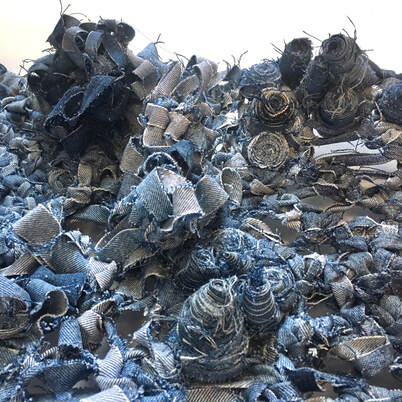 From the start, there was the trouble of actually getting a full view of this sprawling, chaotic, twisted mass of deconstructed jeans. It required everyone to stand around the perimeter of the low-lit white-cube gallery, in a circle, facing in, looking down at this problem child. There was the troubling of its position: Why not on the wall or hung from the ceiling? Since it’s sprawled out on the floor, does it invite being walked on? There was the troubling of method: Why the knotting and weaving and braiding? Why the obvious waistbands and labels? Why spend all this time and labour? Why not just a pile of denim strips? And there was the troubling over concept: Is it too obvious? Too simple? Too many signifiers? Not enough points of entry? Or too many? Is it art or craft? Who is this talking to? And to what end? And those are just my questions. 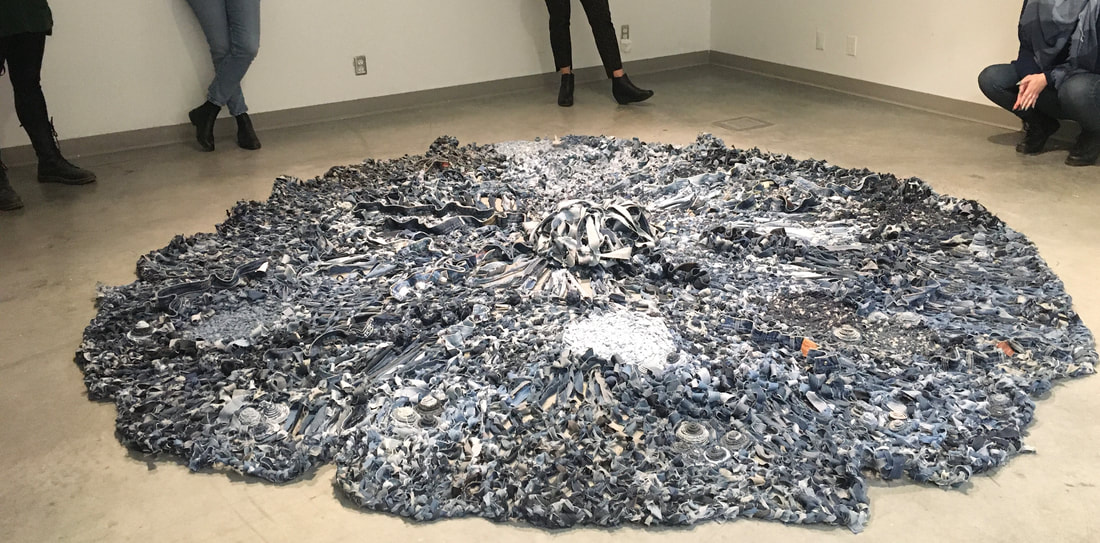 I question everything, especially as I work, with my hands, intuitively. But my first line of questioning is directed at the material itself. What do you want from me? (Or, to borrow from my then-eight-year-old nephew, in an inexplicable situation: What are we even doing here?) As much as I could have sat and gazed at the striated piles of folded jeans collected, machine-washed and line-dried by my mother and hauled to my studio by my others, now those jeans demanded more of me. Seams, the index of the work by mainly women in foreign factories, needed to be exposed, so I cut them away from the yardage, bound them up in my own hand-stitching into tight, potent fast-fashion/slow-craft units. For what? For now, just for today: my daily reminder not to overthink or force solutions. The labels and tags required daylighting, too, and the more collisions the better between fonts and texts and all that those brands try to stand for. That left the denim textile, the fabric of this whole fraught, toxic industry. Shucked from their constraints of style and function, I ripped them into strips and watched them fall from my cutting table into heaps on the floor like tidepools. 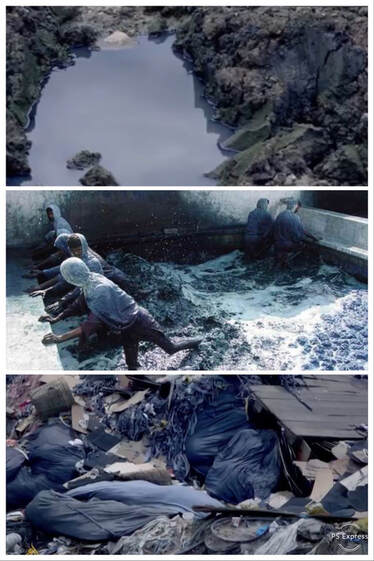 Image-searching "jeans industry" produces a blue-stained global-reality horror show. Image-searching "jeans industry" produces a blue-stained global-reality horror show. As much as I love the immersive works of minimalist textile installations, more would be more here. I would be mining all my own making methods and circulating them into this circles-within-circles piece, in allegiance with all of those who work with their hands for a living or for the love of material. Or both. Like most makers I know, I love the challenge of constraining the work to some specific rules of material engagement so I limited mine to a single material, a knotting/binding additive process and two tools: scissors and sewing needle (well, three, if you count my hands). I intrinsically start from the centre in an almost innate process learned over a lifetime, from macramé plant-hangers (1970s) to braided rugs (1990s) to crocheted giant doilies (2000s) created to cover and protect in the public sphere. The work begins with a gathering of material-energy into a tight nucleus of force (I’ve been mixing up issues of astrophysics and making over the last year) and spreads outward, finding pattern then breaking that pattern toward new horizons. It’s a process of allowing the material to ebb then roil up again into forces that break into near disintegration, a rhythm that keeps me in the swim of things. As it flows outward into small tsunamis, then eddies, I feel an oceanic, topographic, geologic personality wash over this thing. 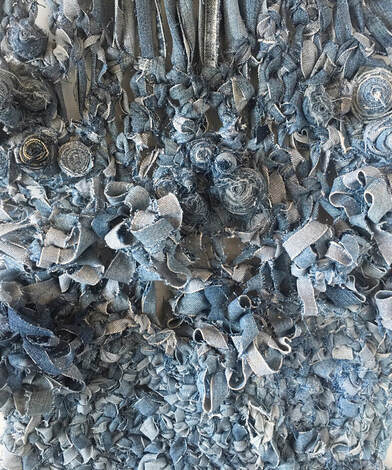 And this definitely wants to be a thing, not an immersive installation. This is an object that requires some finishing, a symphony of soundwaves that started with a bang but wants to end in a hum, in the round. It is a rug you can’t walk on, borne of Seismic Rug that emerged while I was confined to the floor with sciatica, watching footage of the horror of the 2011 Japan Tsunami flood in. It is a resurgence of that making, and that fear of that flood and of the oncoming higher waters, but also the resurgence of my ability to grab hold of physically-challenging handwork after falling on the low-tide foreshore this summer and breaking my ‘good’ arm in two places. I cast aside those fears of not being able to make/do from the cast-offs of this unsustainable era of human history. Resurge feels right for the piece formerly known as the Monster that raises issues from the ground up, this fuzzy menace. The brilliant part about being an aging female is your growing self-acceptance. Maybe this is because you don't feel that ever-present gaze anymore so you’re not feeling as judged. Or maybe it’s because you’ve just had enough of all that and it’s tiresome and dammit you like to be cozy so screw them. Part of my self-acceptance is stepping out of the ‘should-storm’ of art-making and doing what I love to do with my hands: hunting down materials that have already had their first use and playing up their inherent qualities through knotting, weaving, tying, stitching and binding. I want to work repetitively, easily, without technological assistance and without haste or waste. And in doing so I’m carving out space and time to calm down, reflect and to think deeper — more crucial as the distractions threaten to take over. 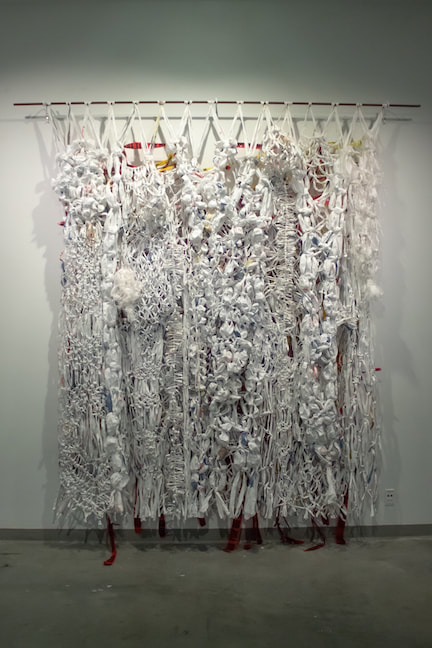 Nate Yandle photo Nate Yandle photo In this way the work is not just in the form or connotations but the well-being and challenge that is relatable to makers who may or may not self-identify as artists. Wrapped up in there are issues of endurance, innovation, history of labour, the learning of the skill, dedication (and frustration), the specific culture and history of the method, the muscle memory that extends back to childhood, and the relationships built through the gathering of the materials. Through this making I make some hay over the established boundaries between the privileged art world and real life, between craft and sculpture, between tactile and political action. Scaffolds is composed of found spun-polyester building wrap, tarp and nylon cord over an armature of waste construction materials including caution tape, PVC piping, rebar, conduit, baling wire, and junction boxes, all attached through simple knots. Special thanks goes to the construction workers who delivered these materials from their many jobsites to my studio for my useless work with many functions. 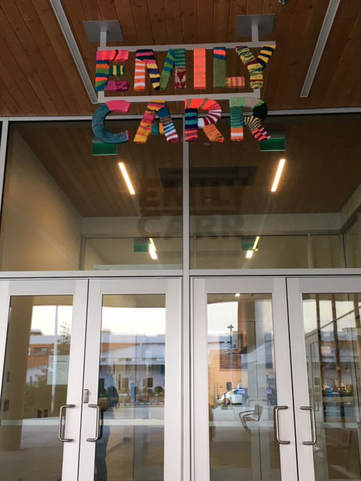 The other day I did this because it really needed to happen. All that gleaming new-campus architecture, surrounded by other gleaming buildings and gleaming buildings yet-to-come was begging for a little fuzzying up. I did my undergrad at the old Emily Carr University of Art and Design campus which was decidedly less smooth and metallic and more crafty, situated as it was in the Granville Island artisan mecca on the ocean's edge. I liked running my hand along the old wooden posts carved with decades of scrawled text, and all the wiring and ductwork that in the last few years looked like a set out of Brazil. I miss the giant murals on the cement factory silos next door and the funky houseboats and the food stalls in the public market and Opus Art Supplies 30 feet away from the front entrance. The new serene, clean Emily Carr building is surrounded by new and planned condos that most students could never afford, high-tech companies and, soon, an elevated rapid transit rail line. As much as I wanted to return for graduate studies, I was not convinced that I would be a good fit here, so asking for permission and access to the sign was a bit of a trial balloon for me. I got quick and full support for the idea and its installation, and now see this new white space as a blank canvas, ready for the next era of student artistic expression. This is my first solo yarn-bombing foray. A bunch of us attacked the old school back in the day for a textile-themed student show but I have yet to meet my people here. So the Emily Carr Cozy is not just a balloon, it's a flare. Is there anybody out there? As I busied my freezing fingers with the stringy stuff (in hard hat, on the Skyjack operated by design tech services maestro Brian) I kept an ear out for reaction. And it was good. Sharing the fuzzy intervention on social media (#craftivism, #subversivestitch etc.) reminds me that I am not alone in my need for needling authority. Indeed, this public performance includes behind-the-scenes connecting with my community of makers to collect their leftover yarn and thrift-store finds even before the main act. (You know who you are.) Textile interventions in the public sphere have a way of provoking polarizing responses. Some love the often-chaotic hand-wrapping of colourful fiber; others view the crafty messing with architecture with disdain of all things cozy and crafty and engendered female. I liked the idea of having to wear a hard hat and working for four hours in a Skyjack, in the mode of construction workers in the immediate vicinity of my rapidly changing hometown, to complete my knitting job. A visual of the process, below. (All photos by Caitlin Eakins) Dear Santa, I know I haven't written since I was a kid, and when it comes to wants, I'm pretty much good. Unlike a lot of my neighbours who rent homes that are slated for demolition in the coming year or who have to hit the food bank at the end of every month when the money runs out, I'm safe and secure — for now. You see, I'm a bit of a prepper. I worry about the security of all our food and the hikes in cost of living in the era of climate change so I've been doing workarounds for a lot of that. I have a kitchen garden and my main way of getting around is by bike. My work- and social life surrounds making, mostly with materials that have already served their primary purpose. If the power grid or the banks fail, I can at least charge up my bike lights and headlamps with my Biolite camp stove, using bits of cardboard and twigs so I can get out there and be of some use. My one weak spot, though, is heat. Condos with wood-burning fireplaces being a rarity in these parts, I would have no choice but to go outdoors and hang by the bonfires in the streets. 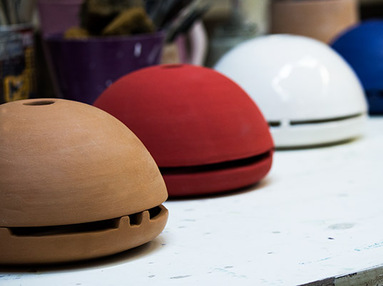 But now I see there is the Egloo, a table-top terracotta dome-thing that can throw off 70C degrees of radiant heat using just a few votive candles. Pant! Pant! It's the brainchild of Marco Zagaria, a student at the Academy of Fine Arts in Rome. Trouble is, it's not quite available yet. Zagaria has been hand-making the prototypes on a potter's wheel (promo video below) and is currently crowd-sourcing funding — already surpassing his goal by 15 per cent at the time of this writing — to have them mass-produced. So here's where you come in, Santa. I don't know if I can wait, what with us all teetering on this edge of the Ring of Fire and seismologists referring to the imminent major earthquake as The Big One. I figure if you can squeeze your girth into a gas fireplace exhaust vent you can put an Egloo under my tree pronto. However, as is my nature, I am prepped for the disaster of that not happening as well, so I've sourced some of Zagaria's own research and have latched onto a snippet of his virtual collaboration that he tagged as one of his YouTube 'favorites', a simple arrangement of one clay plot bolted inside another, resting on some thin cinderblocks. (See YouTube clip, at bottom.) It ain't pretty, but it will do the job in a pinch and uses stuff in my immediate vicinity. Just goes to show, it takes a creative like that Italian art student to arrive at that balance between form and function that marks brilliant industrial design, which begets attraction which begets demand which begets profit motive which begets financial backing which begets wide-scale production which begets marketing to preppers like me. What am I saying? — you're Santa. Surely you know all about the value of artists in economics and sustainability innovations. Wishfully, Carlyn The mammoth art museum experience is like an all-inclusive resort for the mind: there's so much coming at you the brain binges 'til it can't party anymore. Unless you're an art history major, what's hanging on those soaring walls and placed on those marble floors at the big art palaces like the Louvre, the Rijksmuseum and The Met is filled with cranial-clanging mystery, intrigue, obscurity, beauty and repulsion that can crash the whole neural system in something approaching Stendhal Syndrome. There's only so much visual field one garden-variety brain can take in. You need to pace yourself, preferably over several days. 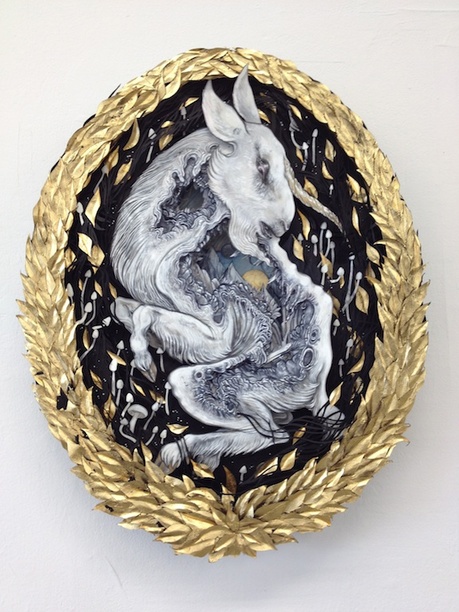 Alison Woodward's emblematic, multi-layered drawings suggest carcasses. Alison Woodward's emblematic, multi-layered drawings suggest carcasses. Same goes for big education-institution shows so this is the how I tackle the annual Emily Carr University Grad Show, now open daily until May 18 on Vancouver's Granville Island. With hundreds of final works in media arts, sculpture, industrial design, ceramics, illustration and visual arts packed into two buildings I take the cavernous rooms of randomness in small bursts over a few days, usually with one friend at a time — a sort of playdate. But the only thing organized about this date is the area of creative work we're going to linger in. It's the difference between sports on a school field and free play in the forest. The real play is in the conversation that is sparked just by being in the milieu of this cacophonous visual field. It might start off as first impressions of an individual piece but often ends up in a whole different kind of thinking, and that's where the exhilaration lies. It's all just as important in the creative process as working in the studio. The beauty of online column-writing is infinite space, so, in the spirit of the gargantuan art museum and its daunting theme-free collections, as well as the need to let the brain out to play, I present here a few of my own pics of emerging visual artists at this year's Emily Carr grad show whose works contest the two-dimensional tradition. 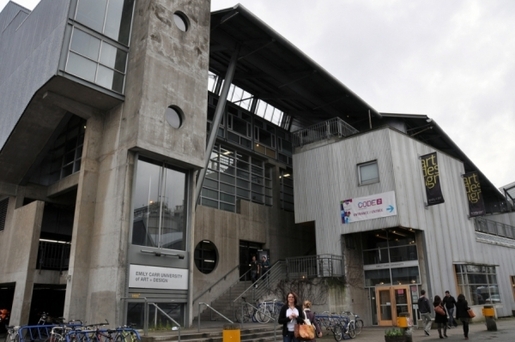 Photo of ECUAD's South Building by Stephen Hui/Georgia Straight Photo of ECUAD's South Building by Stephen Hui/Georgia Straight When finally — yet suddenly — I graduated from Emily Carr University of Art and Design, I was done, done, done, exhausted after four intense years of input. Now I needed space for four more years of output, to practice and to develop a practice. But finding a suitable work space in this pricey city is no easy task. Self-(un)employed artists are no match for the slick technology firms and ad agencies that will pay top dollar to set up their cool premises in the port-town-era brick buildings. So we make do, sharing whatever space we can get while keeping an ear open for rumours of where we might be able to jump when the Permit Application billboard springs up in front of our crumbling building. 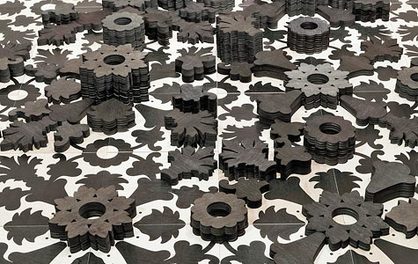 Intriguing shows at the Charles H. Scott Gallery include the current Hyperflat. Intriguing shows at the Charles H. Scott Gallery include the current Hyperflat. Another art school in another city might play a part in providing studio rental opportunities for its new grads, encouraging a healthy cross-pollination of creative post-school work in industrial design, animation, sculpture, painting, media arts and curatorial services. But Emily Carr University is bursting at the seams and is focused on its campaign to move east to Great Northern Way. It's a grand vision, but what will become of the Granville Island community when the two-building campus vacates? What of the dependable Opus Art Supplies, which depends heavily on the student customer base next door, as well as the other material suppliers on the Island? And the George H. Scott Gallery? Vancouver Sun reporter Daphne Bramham took on the topic this week. In her story, one of the original designers of Granville Island, architect Norm Hotson, said replacing the school with another educational institution would help modernize the zone. Or it could be re-energized as "an incubator space” for "innovators", he said, or developed into a cultural hub that might include galleries, artist studios, residencies. And he pointed to Paris’s Cité Internationale des Arts as an example. 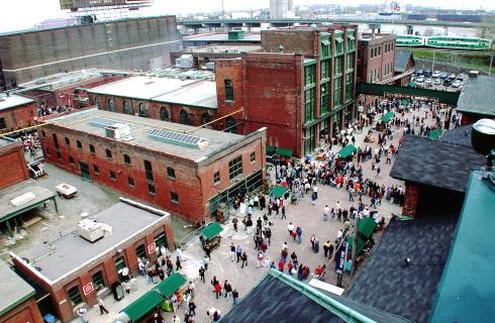 Toronto's Distillery District was revamped into a cultural hub. (Photo from Artscape website) Toronto's Distillery District was revamped into a cultural hub. (Photo from Artscape website) It's this kind of forward thinking that could stop the downtown core and Westside from slipping into a blandly privileged area with all the cultural texture of glassy high-end condos. Granville Island needs a vibrant injection of new ideas and opportunities and Vancouver desperately needs a cultural hub, a multifunctional space with rental studios and residencies for everyone from painters to industrial designers, techies to musicians, performers to writers. Yes, it's a balancing act. Nobody wants the Island to shut as tight as a tomb at night but the neighbours won't take kindly to the place being mobbed by booze-fueled night-crawlers. Artists and students work all hours, often after a day of slinging Italian coffees or serving Public Market customers. As students we purchase our supplies on the island, we depend on the visitors for our shows and showings. Our work ensures Granville Island is a tourist draw, not a tourist trap, that it is committed to Artisan over Ye Olde, authenticity over Disney. It may sound like a pipe dream, but Granville Island was part of the inspiration that led the not-for-profit Artscape in Toronto to turn a collection of industrial buildings into a major cultural hub and tourist draw, in a remarkably short time. (See YouTube interview with Tim Jones, president and CEO of CityScape below.) 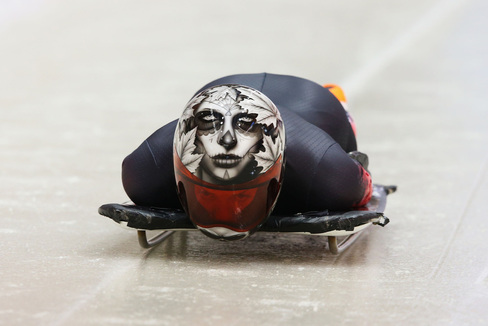 Alex Livesey/Getty Images Alex Livesey/Getty Images The signs, they are a-changing. But to see them you have to look past the visual bombardment of dead-eyed-Kardashian-object images, pop-up balloon-boob ads, and the opening scenes of violence against women on CSI: Whatever. The signs are there, at the current Olympics, on the helmet of Calgary skeleton racer Sarah Reid, the fashion-baggy gear of female snowboarders, the bulk of the women's ice hockey team jerseys. They read: Fierce, driven, focused, fearless. For me, the Sochi Olympics has been a perfect study in semiotics (the study of signs). They're captivating in their complete contradiction to the prevailing mass-media image of young women, and they point to an emerging, alternative 'system of signification,' as the academics might call it. Calgary-based Sarah Reid, 26, shows it in the haunting helmet she conceived with artist and goalie Jason Bartziokas (Alberta College of Art and Design grad '04).  Team Canada playing Finland at Sochi (Canadian Press photo) Team Canada playing Finland at Sochi (Canadian Press photo) The ice hockey team displays it in their uniforms and their team effort — so rarely seen in the culture of young adult women. It took some hard lobbying on their part to get here on the ice or in the half-pipe, and it took a lawsuit win to get them the chance to fly through the ski-jumping competitions. (International Olympics Committee members have a history of excluding women, notably because the sport may injure their reproductive organs.) Although they're still banned from competing in a few Nordic Combined events, the women are alternative models to the Victoria's Secret variety for young girls. But we're not there yet. Not when there are only 24 women in the 110-member International Olympic Committee. (More neat stats here.)
I keep these visual signs at hand, to show whenever one of the young girls in my life is confronted with another misogynist music video. See here? See how they run, ski, jump, spiral, play well together, delight in their own abilities? Visual signs as new modes of thinking. It's official: the Dude Chilling Park sign, a guerrilla-art installation by recent Emily Carr industrial design grad Viktor Briestensky, has been reinstated, with full approval by the city's parks board. Something was gained, but something was lost in there too.  It's not about the loss of the official park name. All you local monarchists can breathe a sigh of relief; there's no report of any move to officially rename the park itself (named in 1972 after the bordering street which was named after Queen VIctoria's German rellies.) It's encouraging that the City listened to the community on this, especially recognizing that Dude Chilling Park is a better locator for all of us who use this rare bit of green space in Mount Pleasant. That would mostly be the dog people who have been referring to this meeting spot by some version of that name since the public art piece of the tubular reclining dude by Denman Island artist Michael Dennis was installed there back in 1991 when the area was still pretty sketchy. So, yeah, it's kind of fun to have that sign back — it even made a line for the Jimmy Kimmel show — but it's lost its original spontaneous, anti-authoriarian potency. 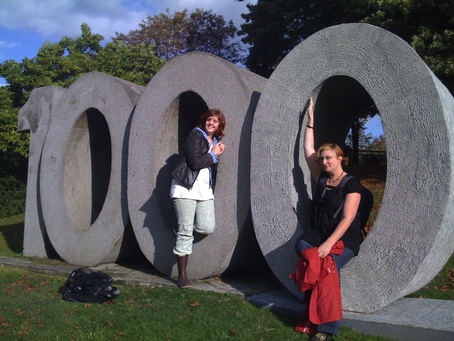 Katherine Nielsen and Jennifer Skillen play with the numbers (Carlyn Yandle photo) Katherine Nielsen and Jennifer Skillen play with the numbers (Carlyn Yandle photo) The wonder remains for the presumably guerrilla-art installation of the third zero to the monolithic '100' statue at the south foot of the Granville Island bridge that suddenly appeared then disappeared in 2008. The clever appropriation of the existing untitled structure, its meaning and apparent materials speaks of the appropriation of this land. I loved that the extra zero had all the cold, inhumane appearance of the existing cast concrete but was knocked off in painted rigid foam. If art is about afflicting the comfortable, creating some community dialogue or shaking up public preconceptions, this was working. I've searched for any information on what genius did it (and how it was installed) and the circumstances for its sudden disappearance. Was it completely unsanctioned, or part of a past public art biennale? Both the Dude Chilling Park sign and the third zero are beautifully crafted urban landscape interventions but it's the one that was mysteriously removed that keeps me thinking about our social history. |
Sharing on the creative process in long-form writing feels like dog-paddling against the tsunami of disinformation, bots, scams, pernicious sell sites and other random crap that is the internet of today. But I miss that jolt of inspiration from artists sharing their work, ideas and related experiences in personal, non-marketing blogs, so I'm doing my part.
browse by topic:
All
Archives
June 2024
|
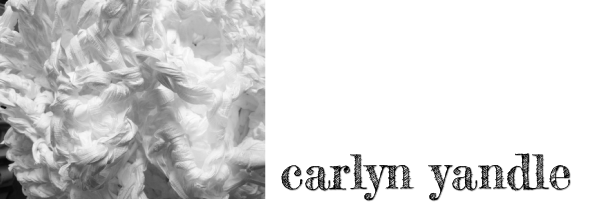
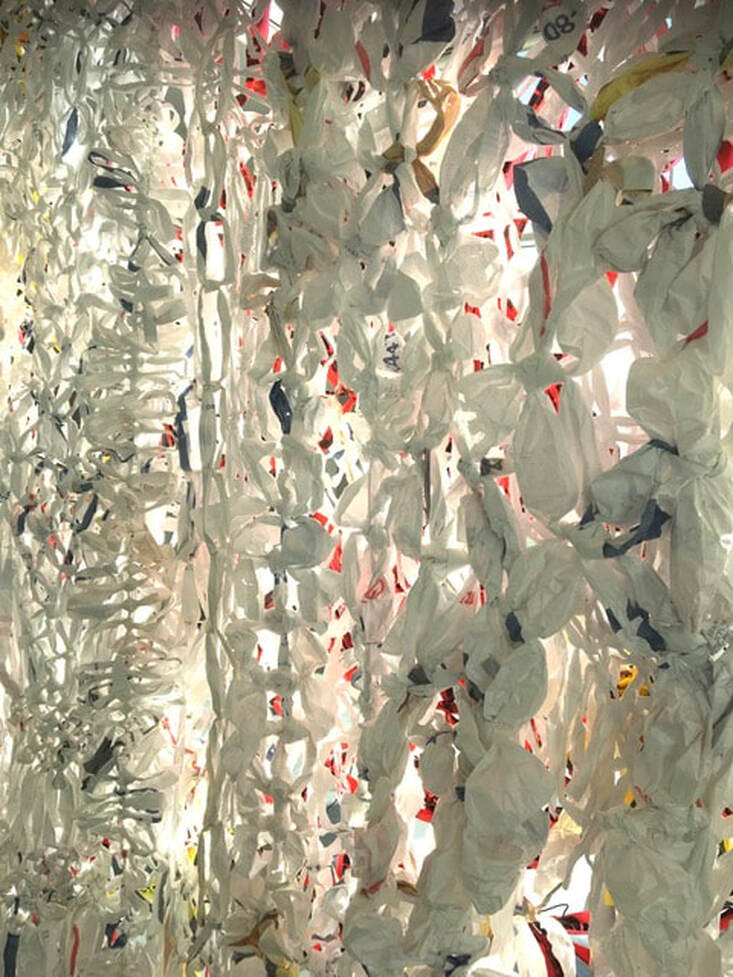
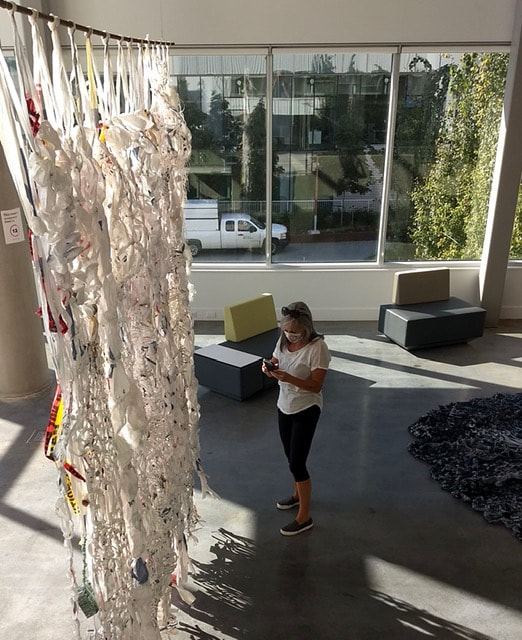
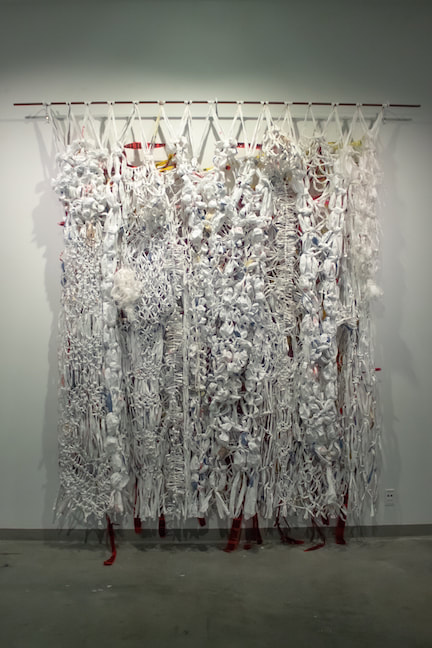
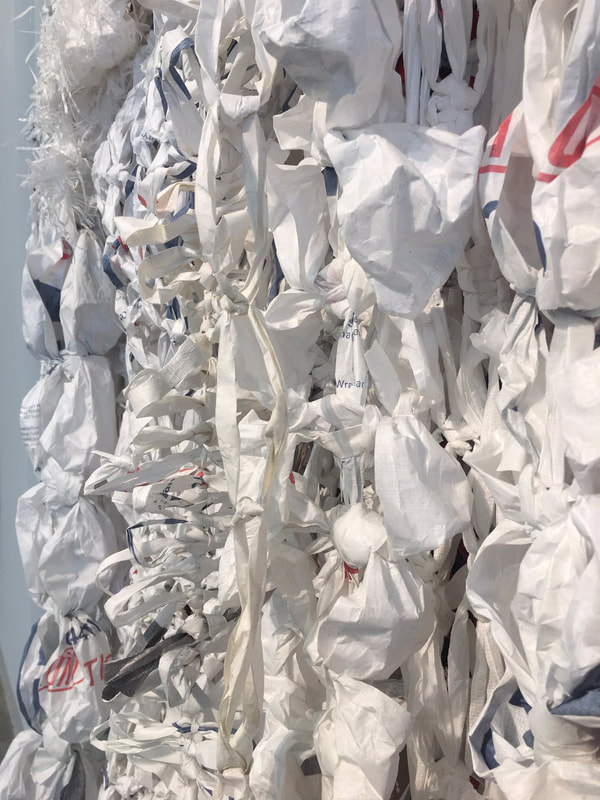
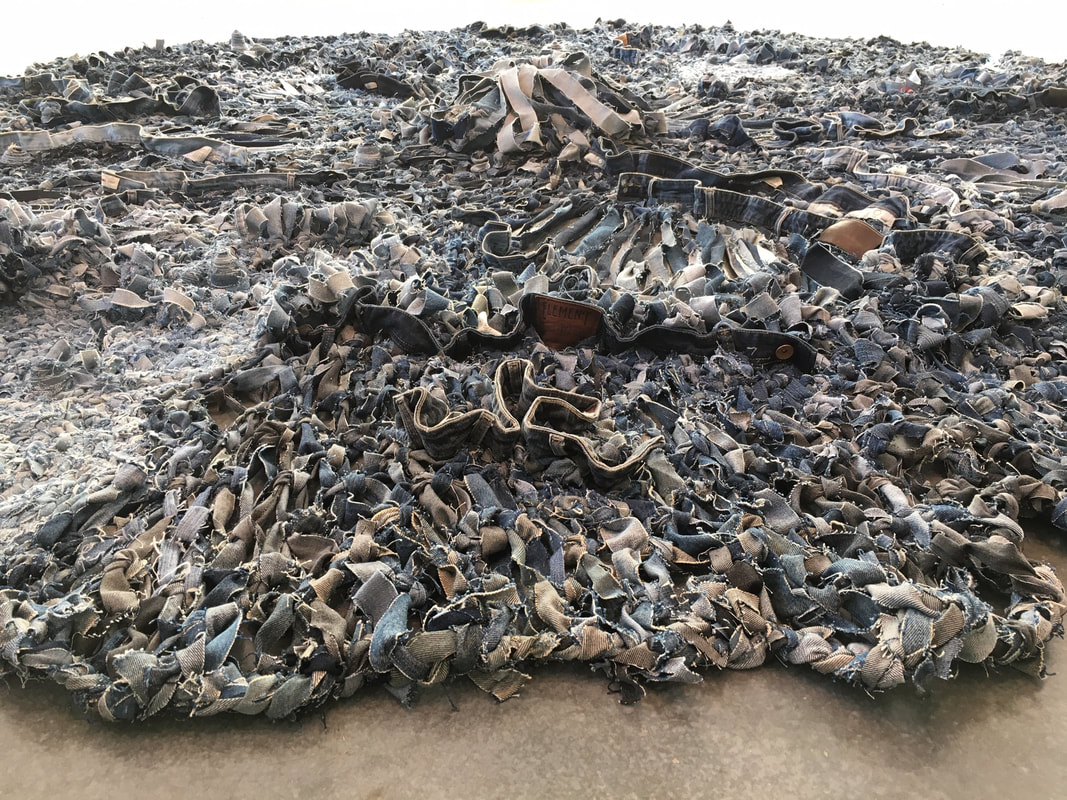
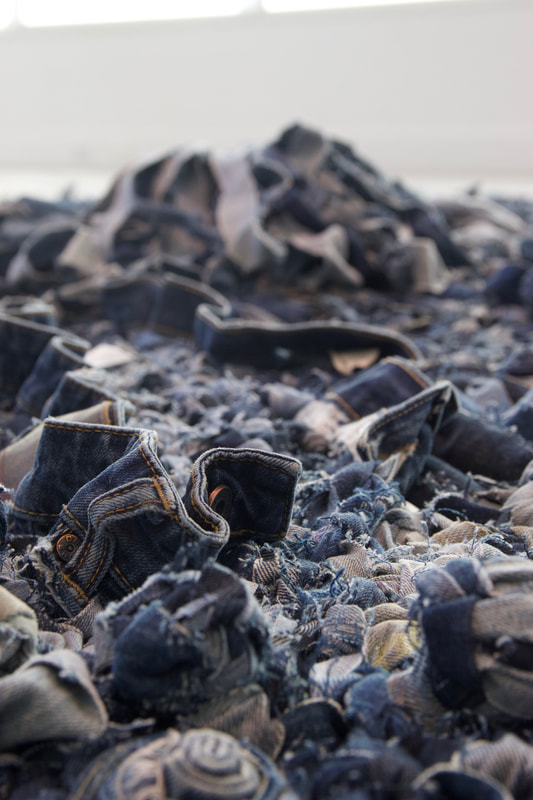
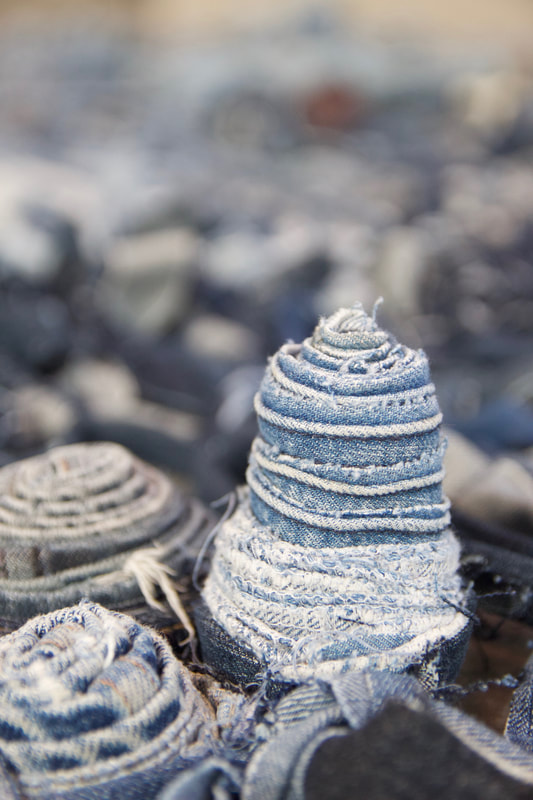
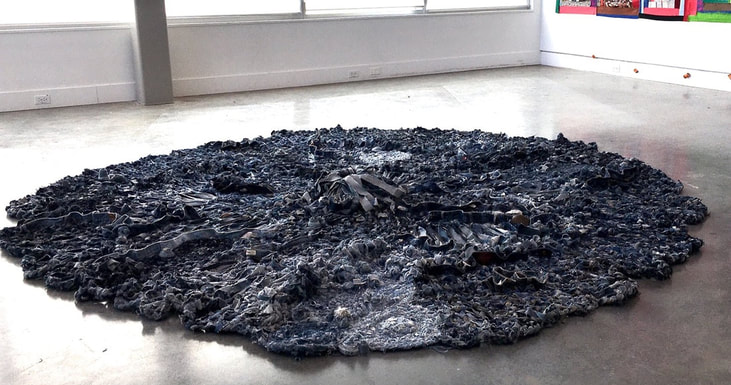
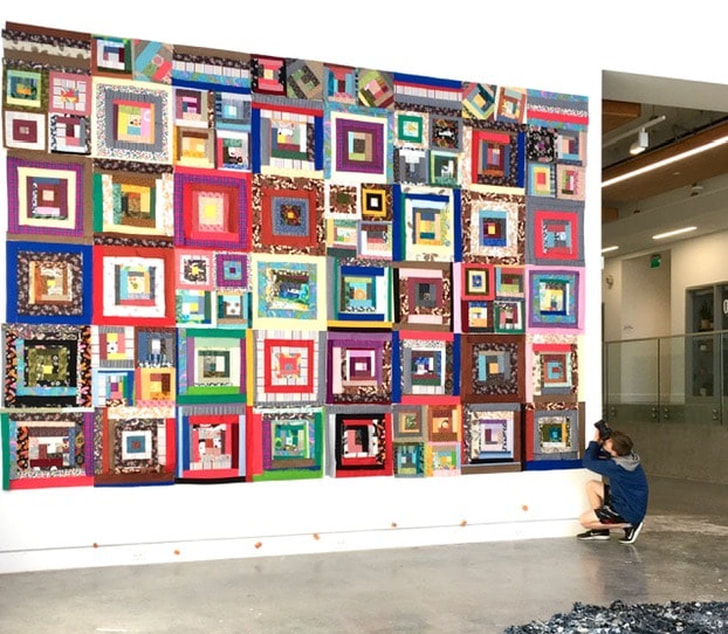
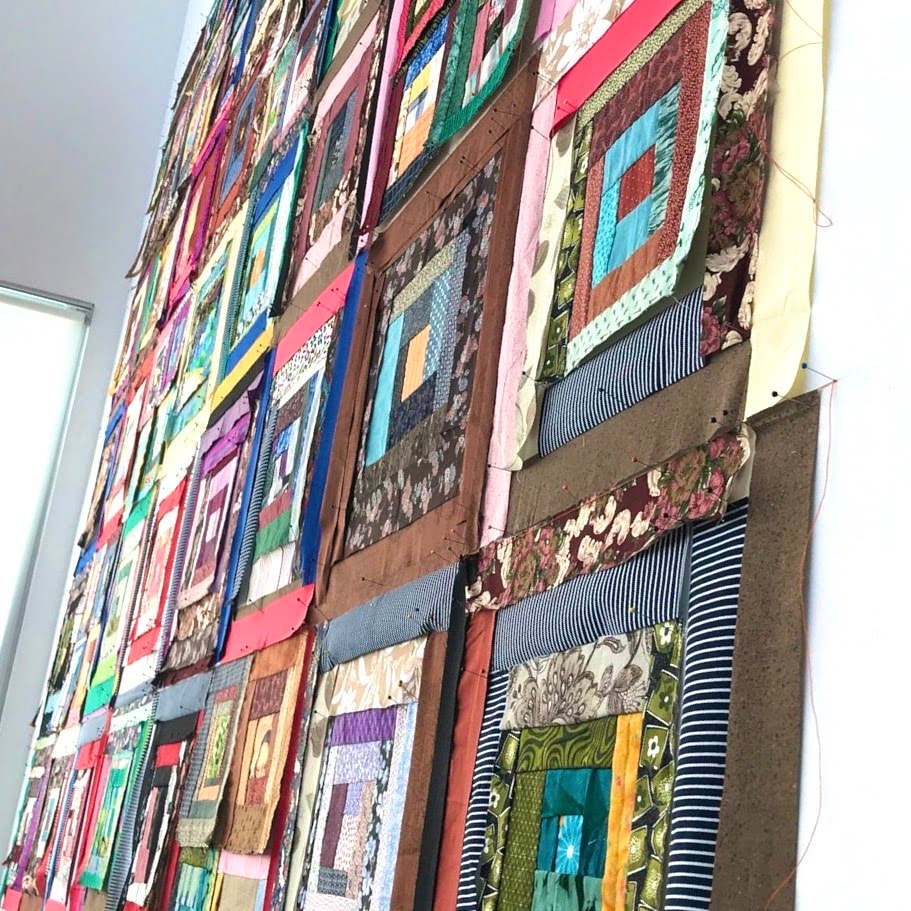
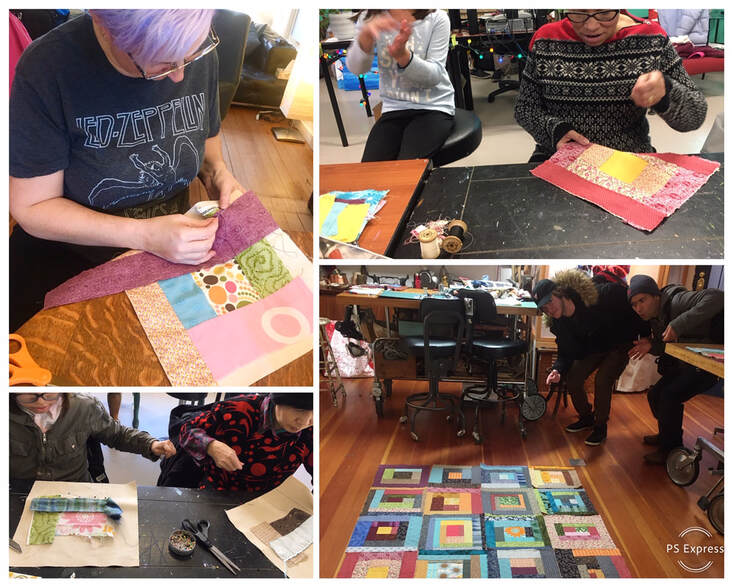
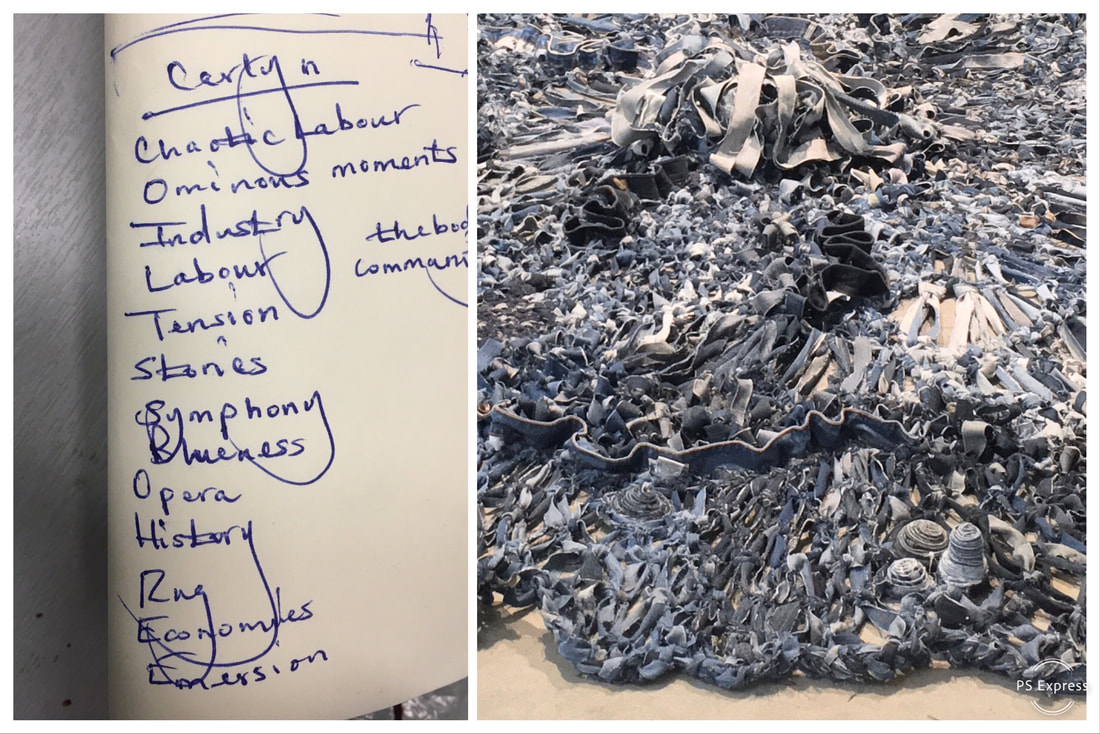
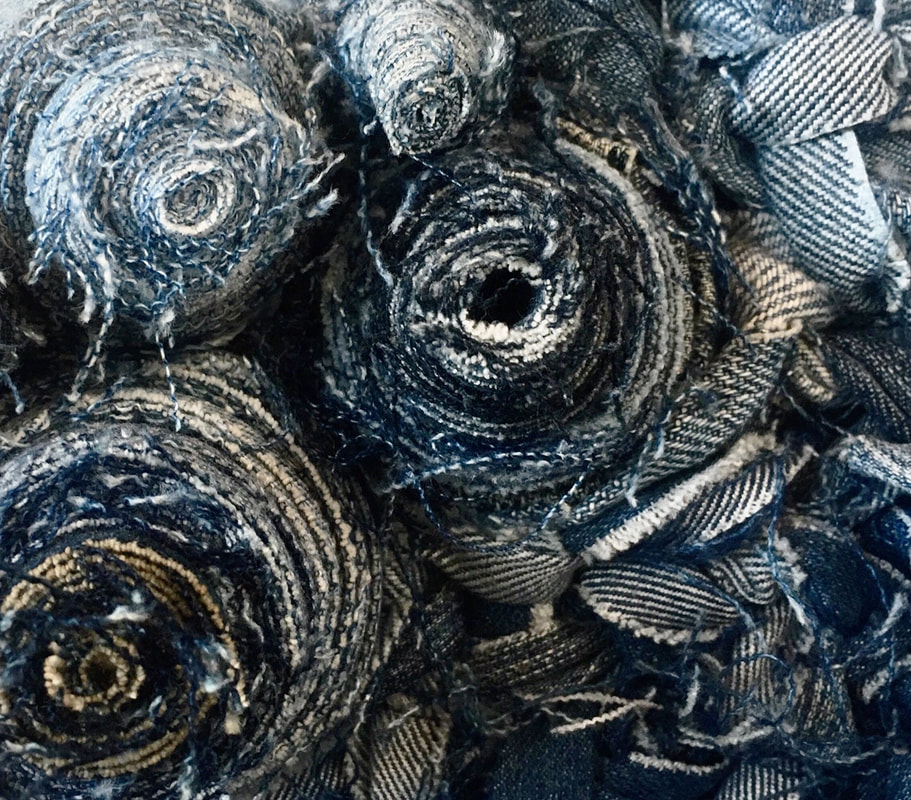
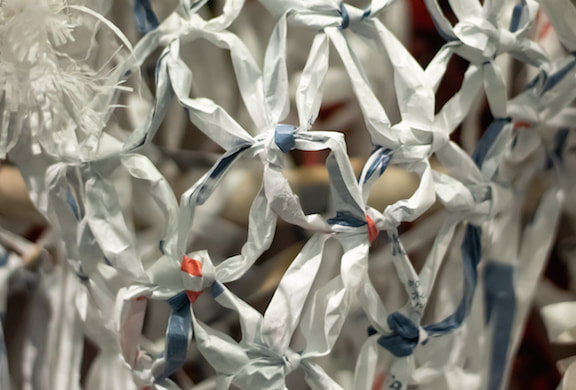
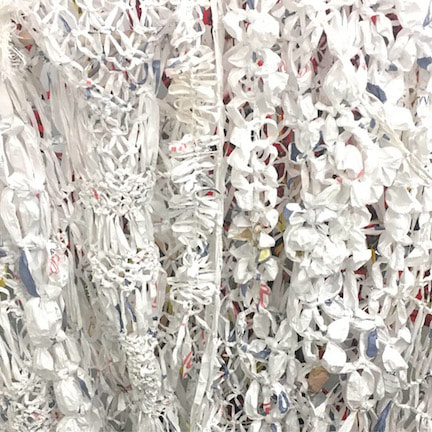
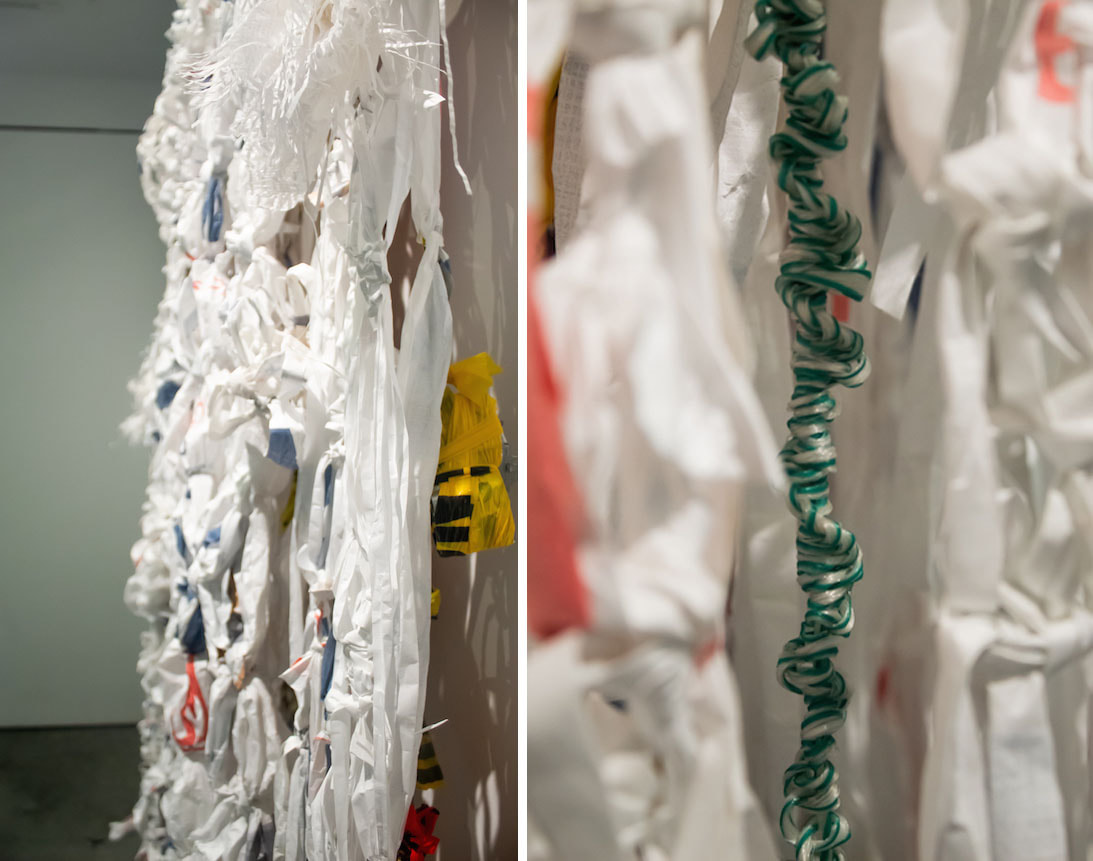
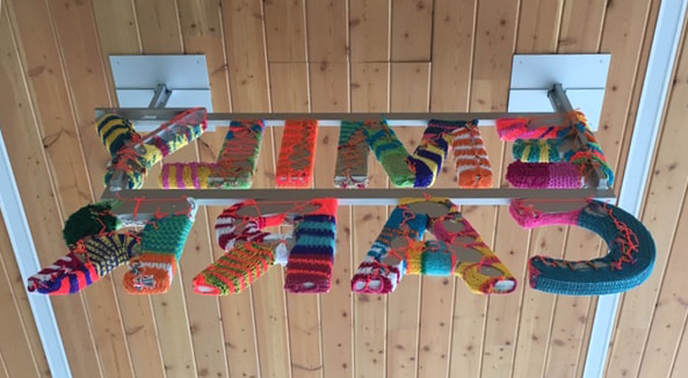
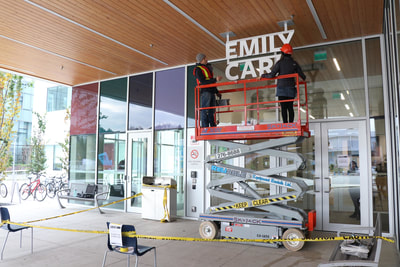
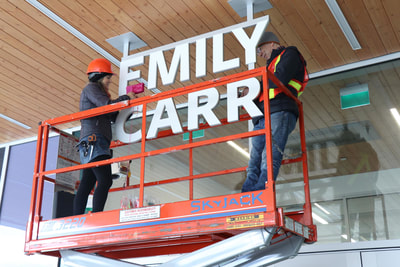
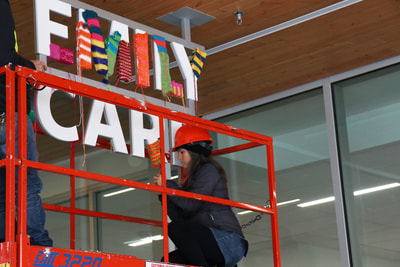
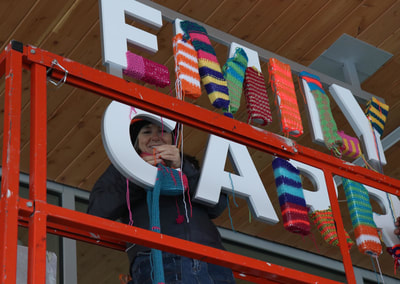
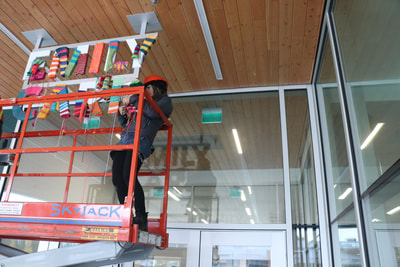
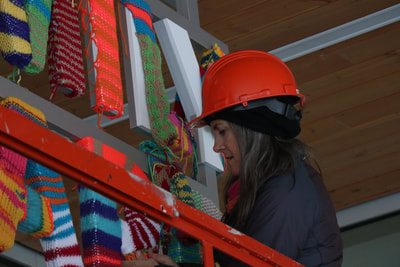
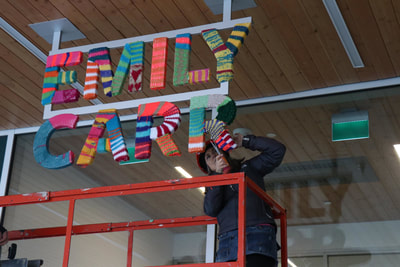
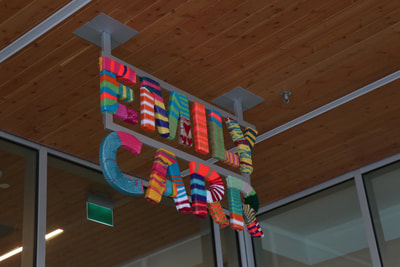
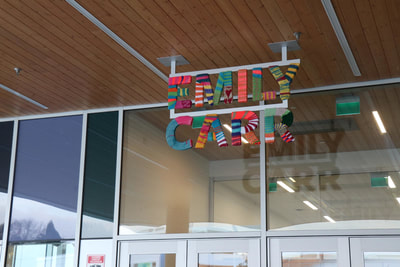
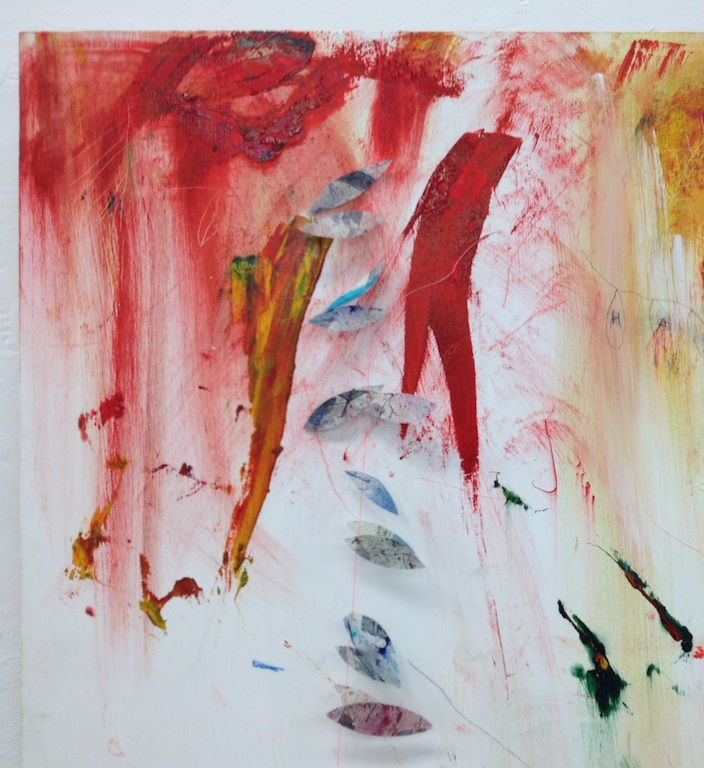
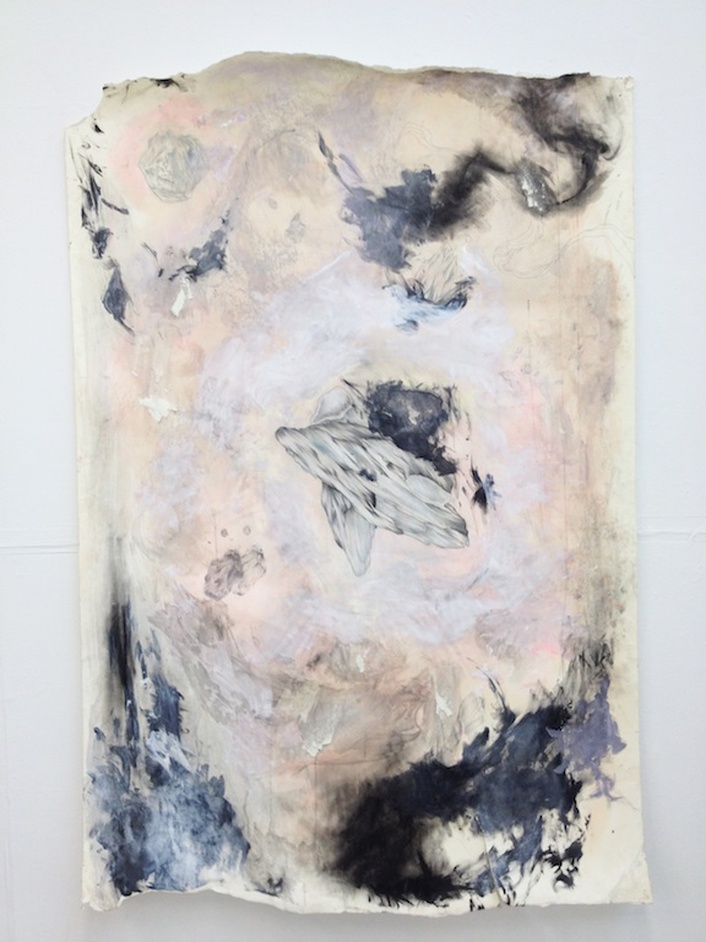
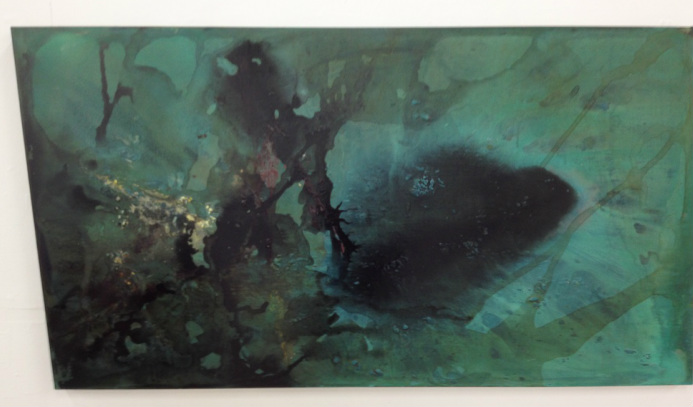
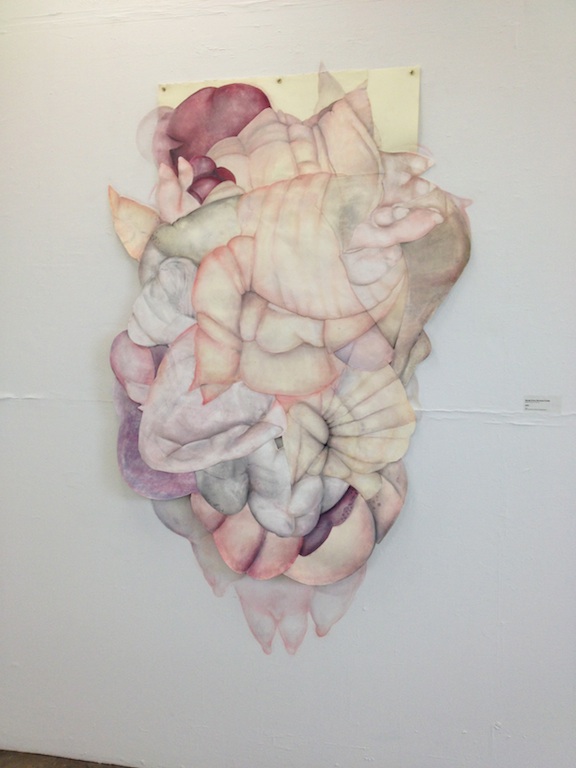
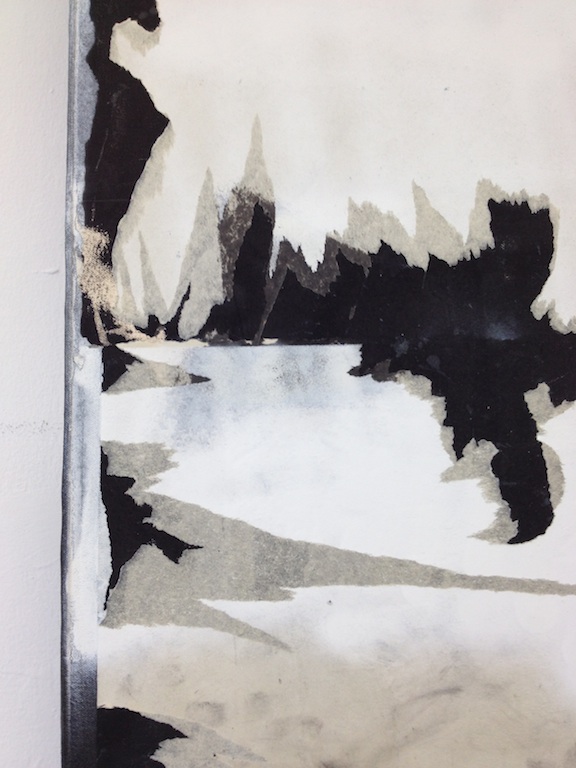
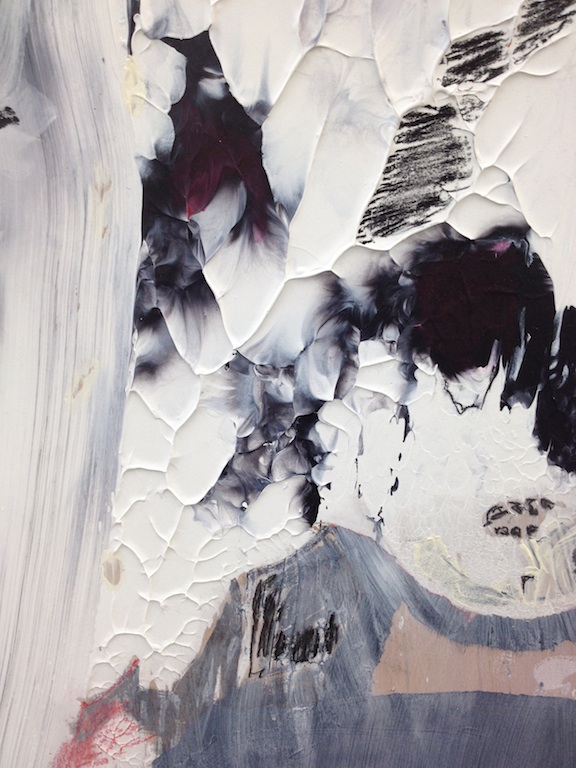


 RSS Feed
RSS Feed

